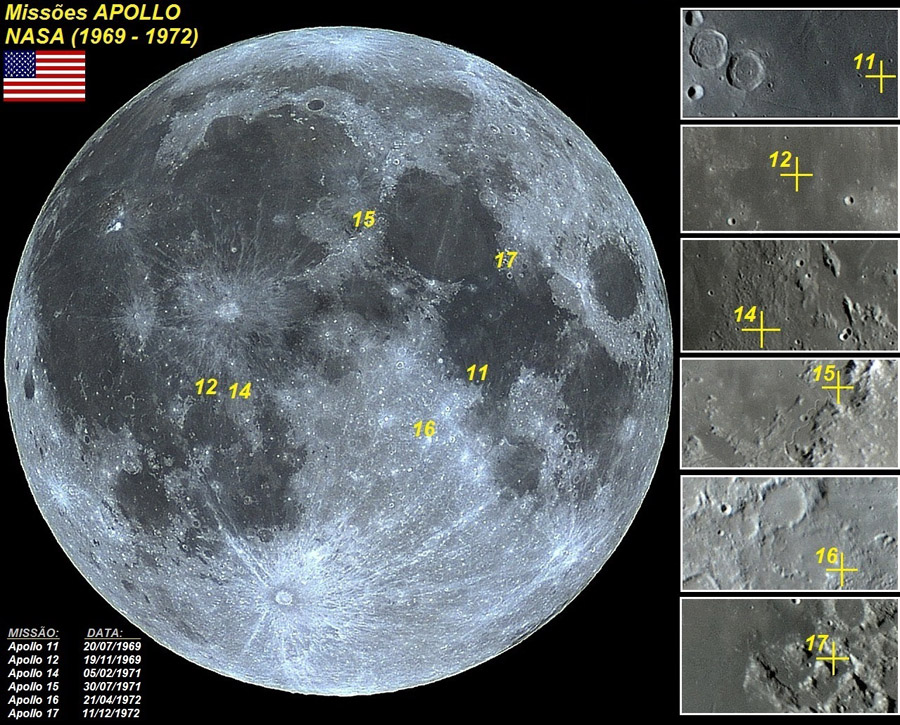Difference between revisions of "October 26, 2013"
| Line 1: | Line 1: | ||
__NOTOC__ | __NOTOC__ | ||
=Where Were the Landings?= | =Where Were the Landings?= | ||
| − | |||
<!-- ws:start:WikiTextHeadingRule:0:<h1> --> | <!-- ws:start:WikiTextHeadingRule:0:<h1> --> | ||
<!-- ws:start:WikiTextLocalImageRule:6:<img src="/file/view/LPOD-Oct26-13.jpg/463214488/LPOD-Oct26-13.jpg" alt="" title="" /> -->[[File:LPOD-Oct26-13.jpg|LPOD-Oct26-13.jpg]]<!-- ws:end:WikiTextLocalImageRule:6 --><br /> | <!-- ws:start:WikiTextLocalImageRule:6:<img src="/file/view/LPOD-Oct26-13.jpg/463214488/LPOD-Oct26-13.jpg" alt="" title="" /> -->[[File:LPOD-Oct26-13.jpg|LPOD-Oct26-13.jpg]]<!-- ws:end:WikiTextLocalImageRule:6 --><br /> | ||
| − | <em>image by [mailto:tolentino@fumec.br Ricardo Jose Vaz Tolentino], Brasil</em><br /> | + | <em>image by [mailto:tolentino@fumec.br" rel="nofollow Ricardo Jose Vaz Tolentino], Brasil</em><br /> |
<br /> | <br /> | ||
The flights of the Apollo spacecraft replaced the Gemini manned program from NASA in 1967. Thereafter, various tests were performed with and without a crew, using Apollo series of ships and the powerful rockets of Saturn series, from the versions I ( Apollo 2 and 3), IB ( Apollo 1, 5 and 7) and V ( Apollo 4 , 6, and 8 to 17), that were guaranteed all the possibilities for success in pioneering and unprecedented mission of soft landing on the lunar surface, which actually came to happen with the conquest of the Moon by the Apollo 11 mission on 20 July 1969. After this important achievement in the history of mankind, a total of 12 astronauts walked on the Moon between 1969 and 1972. The Apollo series of spacecraft were built with three components: the Command Module (where traveled a crew of 3 astronauts), the Service Module (equipped with the engine that propelling the spacecraft orbiting the Moon), and Lunar Module ( compartment that landed smoothly on the surface of the Moon). The Apollo 11 mission was composed by the americans astronauts Neil Armstrong (Commander), Michael Collins (Pilot of the Command and Service Module "Columbia") and Edwin E. "Buzz" Aldrin Jr. (Pilot of the Lunar Module "Eagle").<br /> | The flights of the Apollo spacecraft replaced the Gemini manned program from NASA in 1967. Thereafter, various tests were performed with and without a crew, using Apollo series of ships and the powerful rockets of Saturn series, from the versions I ( Apollo 2 and 3), IB ( Apollo 1, 5 and 7) and V ( Apollo 4 , 6, and 8 to 17), that were guaranteed all the possibilities for success in pioneering and unprecedented mission of soft landing on the lunar surface, which actually came to happen with the conquest of the Moon by the Apollo 11 mission on 20 July 1969. After this important achievement in the history of mankind, a total of 12 astronauts walked on the Moon between 1969 and 1972. The Apollo series of spacecraft were built with three components: the Command Module (where traveled a crew of 3 astronauts), the Service Module (equipped with the engine that propelling the spacecraft orbiting the Moon), and Lunar Module ( compartment that landed smoothly on the surface of the Moon). The Apollo 11 mission was composed by the americans astronauts Neil Armstrong (Commander), Michael Collins (Pilot of the Command and Service Module "Columbia") and Edwin E. "Buzz" Aldrin Jr. (Pilot of the Lunar Module "Eagle").<br /> | ||
<br /> | <br /> | ||
| − | <em>[mailto:tolentino@fumec.br Ricardo Jose Vaz Tolentino]</em><br /> | + | <em>[mailto:tolentino@fumec.br" rel="nofollow Ricardo Jose Vaz Tolentino]</em><br /> |
CAW Note: I congratulate Ricardo for producing this excellent poster!<br /> | CAW Note: I congratulate Ricardo for producing this excellent poster!<br /> | ||
<br /> | <br /> | ||
| Line 25: | Line 24: | ||
<br /> | <br /> | ||
<strong>Related Links</strong><br /> | <strong>Related Links</strong><br /> | ||
| − | Ricardo's [ | + | Ricardo's [/www.vaztolentino.com.br website]<br /> |
<br /> | <br /> | ||
<hr /> | <hr /> | ||
Revision as of 22:51, 4 January 2015
Where Were the Landings?

image by " rel="nofollow Ricardo Jose Vaz Tolentino, Brasil
The flights of the Apollo spacecraft replaced the Gemini manned program from NASA in 1967. Thereafter, various tests were performed with and without a crew, using Apollo series of ships and the powerful rockets of Saturn series, from the versions I ( Apollo 2 and 3), IB ( Apollo 1, 5 and 7) and V ( Apollo 4 , 6, and 8 to 17), that were guaranteed all the possibilities for success in pioneering and unprecedented mission of soft landing on the lunar surface, which actually came to happen with the conquest of the Moon by the Apollo 11 mission on 20 July 1969. After this important achievement in the history of mankind, a total of 12 astronauts walked on the Moon between 1969 and 1972. The Apollo series of spacecraft were built with three components: the Command Module (where traveled a crew of 3 astronauts), the Service Module (equipped with the engine that propelling the spacecraft orbiting the Moon), and Lunar Module ( compartment that landed smoothly on the surface of the Moon). The Apollo 11 mission was composed by the americans astronauts Neil Armstrong (Commander), Michael Collins (Pilot of the Command and Service Module "Columbia") and Edwin E. "Buzz" Aldrin Jr. (Pilot of the Lunar Module "Eagle").
" rel="nofollow Ricardo Jose Vaz Tolentino
CAW Note: I congratulate Ricardo for producing this excellent poster!
Technical Details
Apollo landing sites:
Apollo 11 land site: 02/22/2011, 02:28:50 (05:28:50 UT);
Apollo 12 land site: 05/31/2012, 21:16:02 (00:16:02 UT);
Apollo 14 land site: 05/30/2012, 21:19:02 (00:19:02 UT);
Apollo 15 land site: 06/28/2012, 21:05:20 (00:05:20 UT);
Apollo 16 land site: 04/11/2012, 02:38:36 (05:38:36 UT);
Apollo 17 land site: 04/10/2012, 04:08:06 (07:08:06 UT);
Sky-Watcher Collapsible Truss-Tube DOB + Orion StarShoot Solar System Color Imager III + Celestron Ultima 2X Barlow.
Full Moon:
05/06/2012, 00:35:46 (03:35:46 UT);Orion EON 80mm ED APO Refractor + Orion StarShoot Solar System Color Imager III.
Related Links
Ricardo's [/www.vaztolentino.com.br website]



